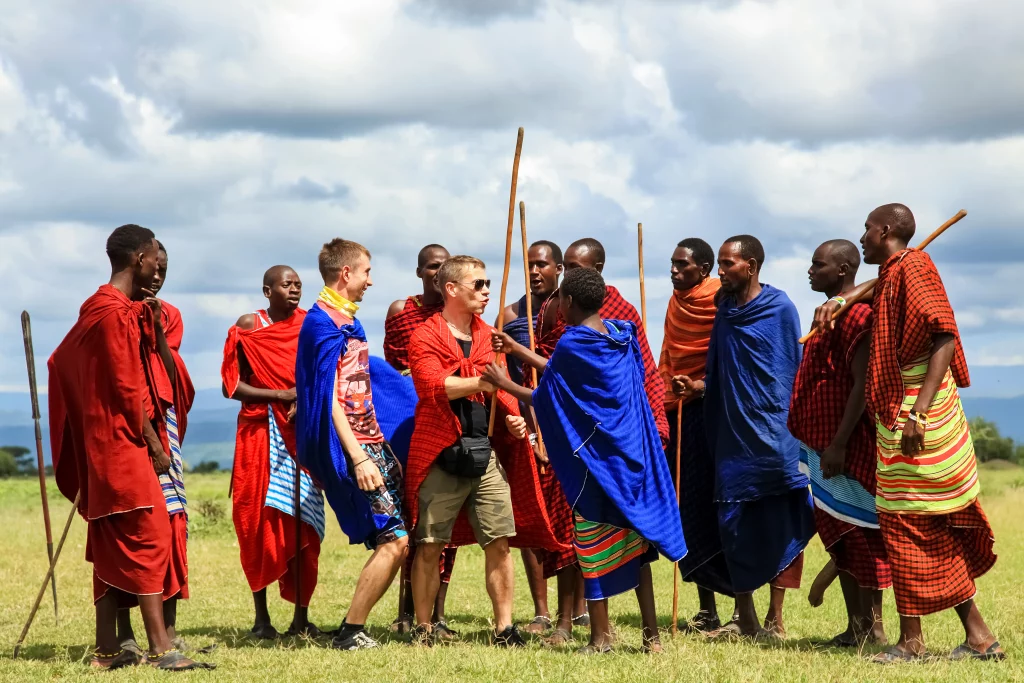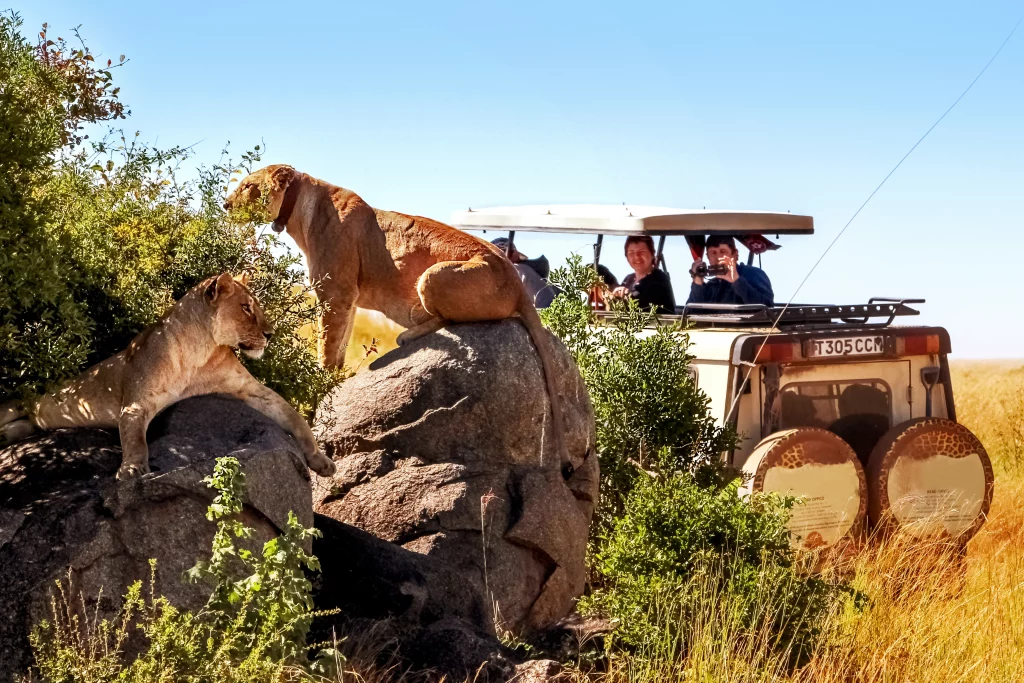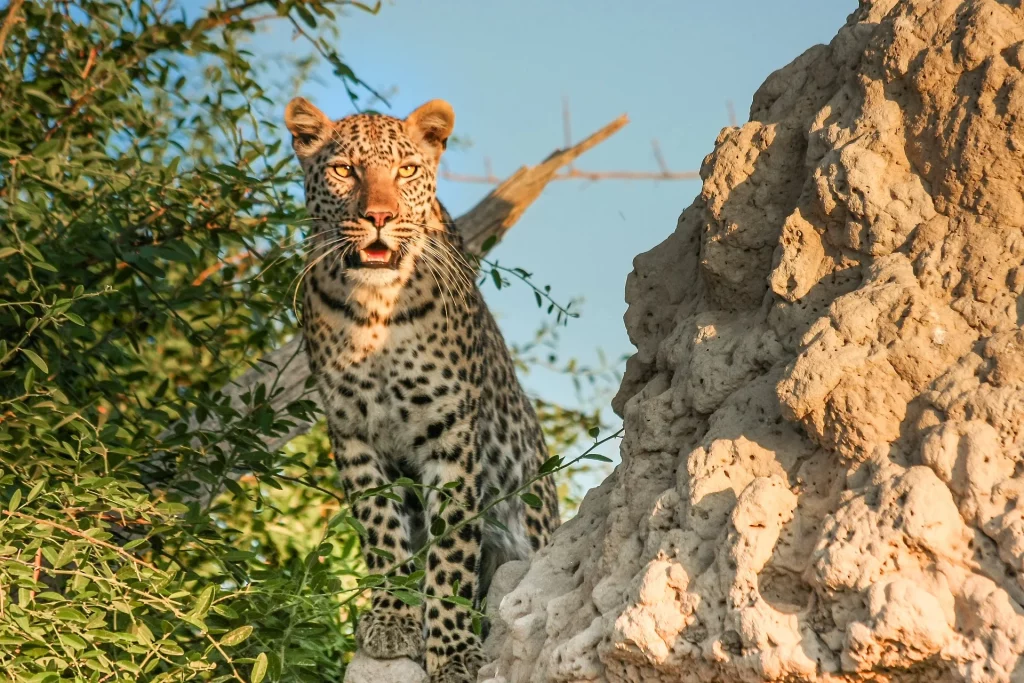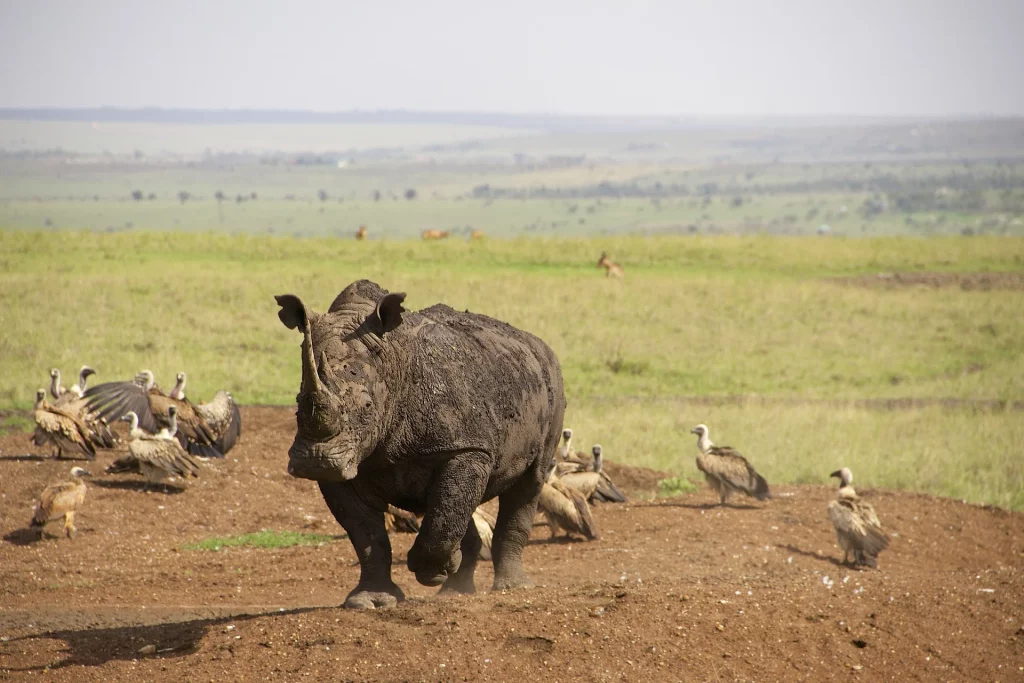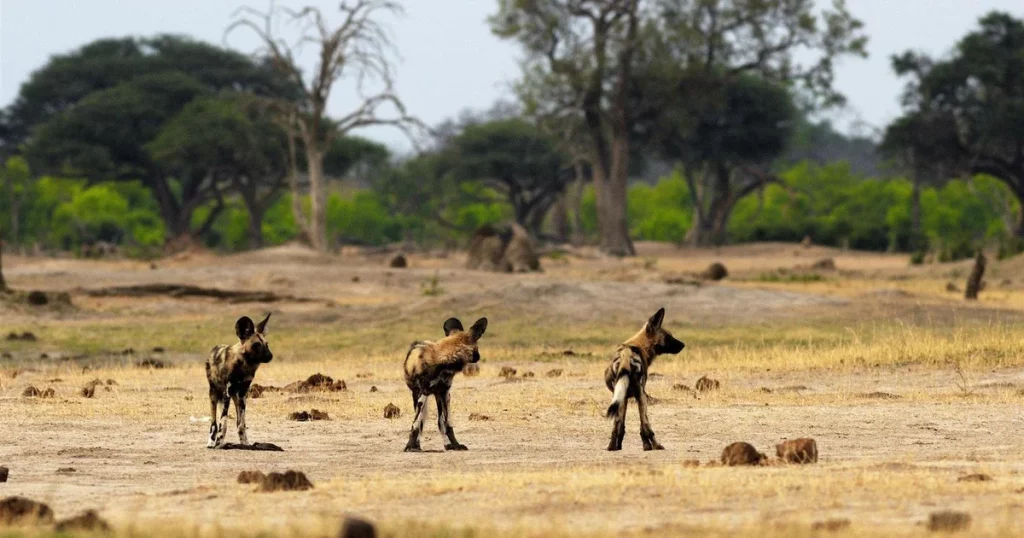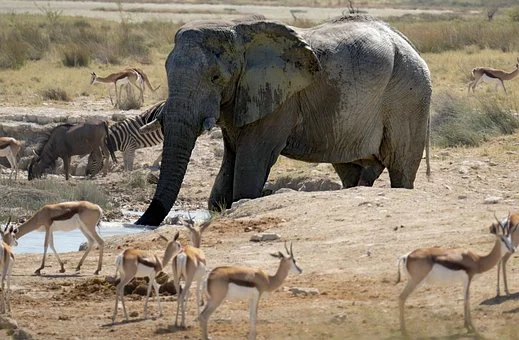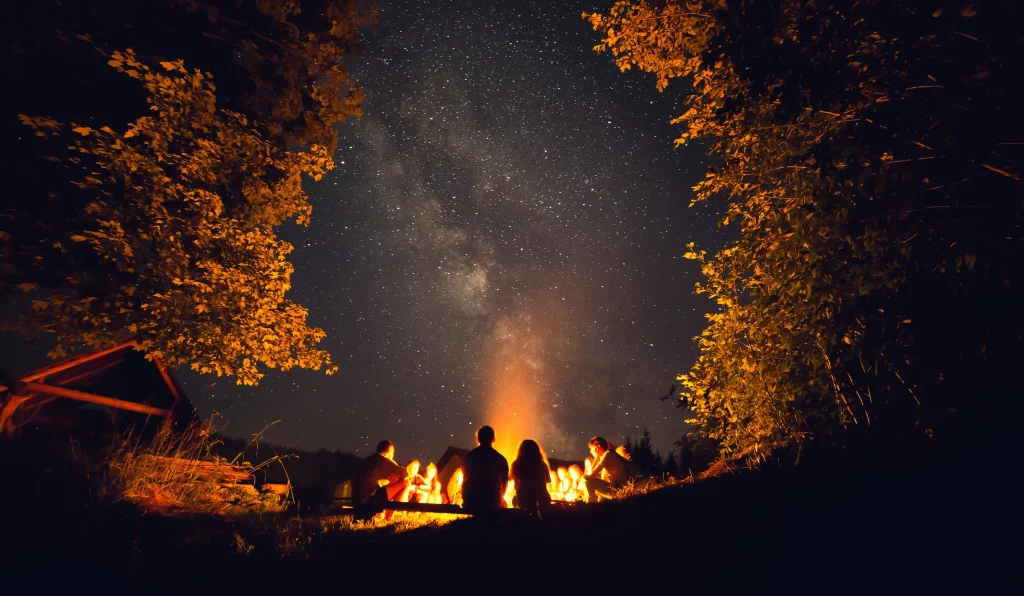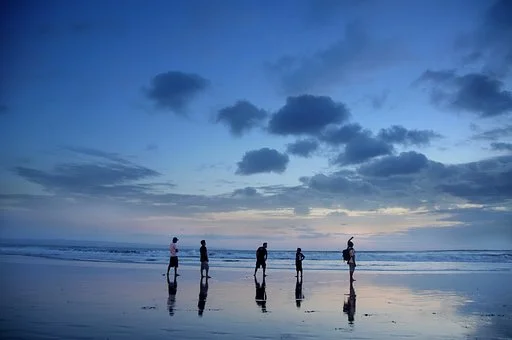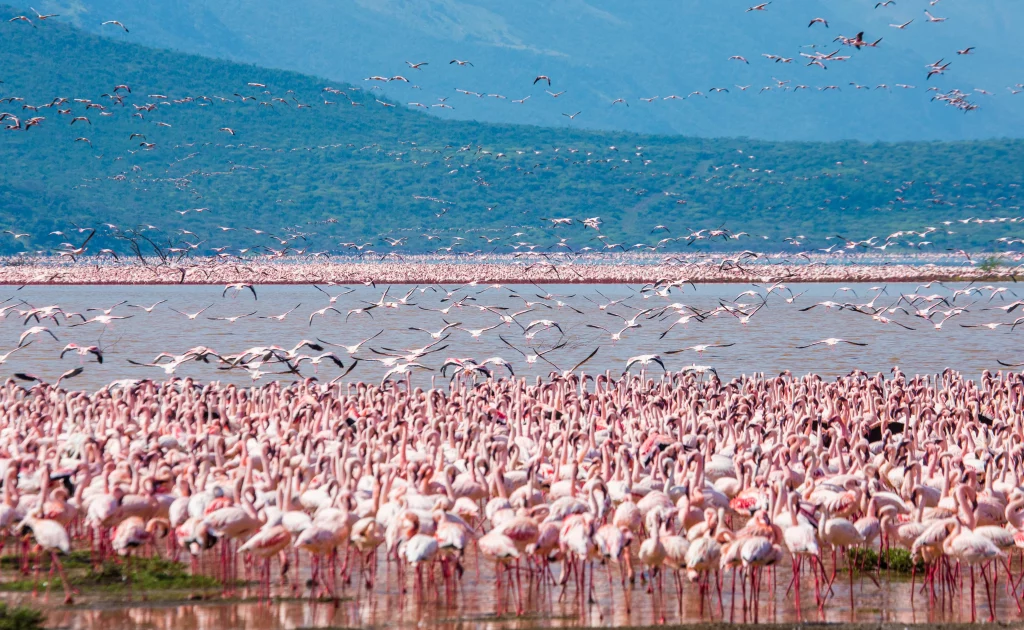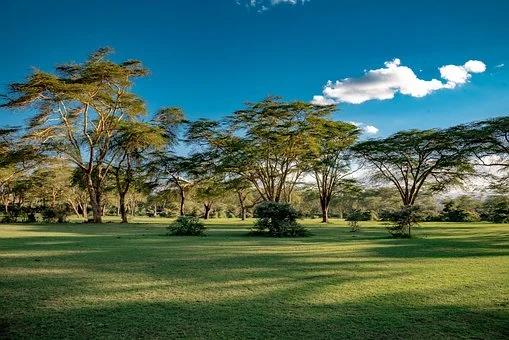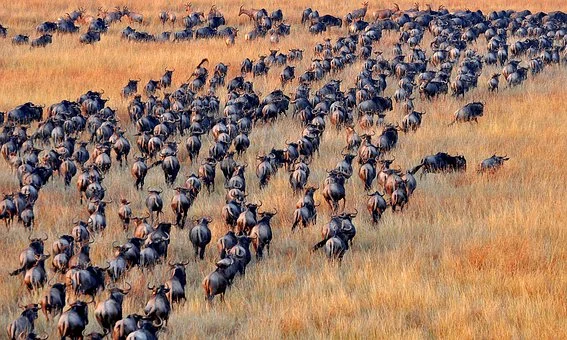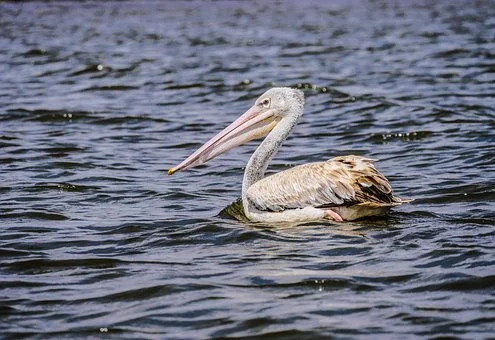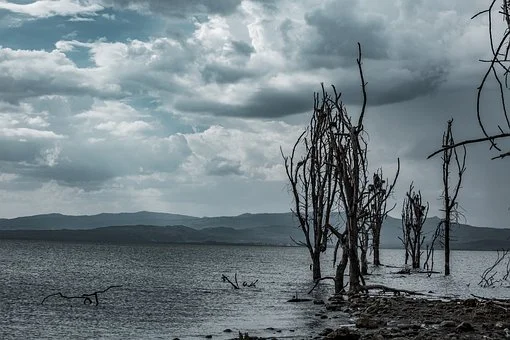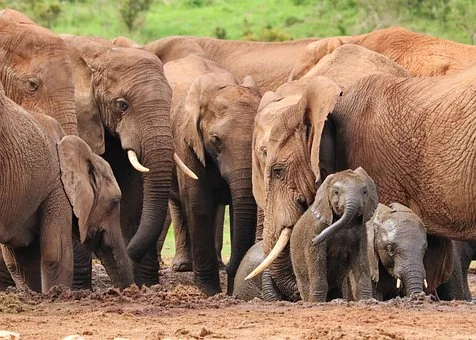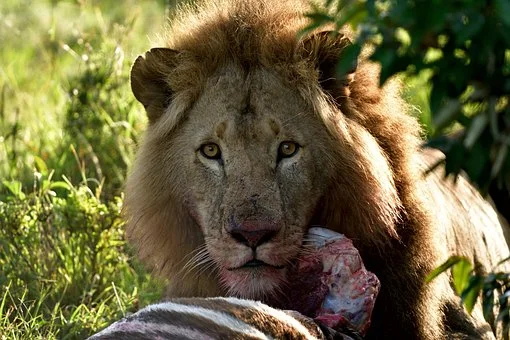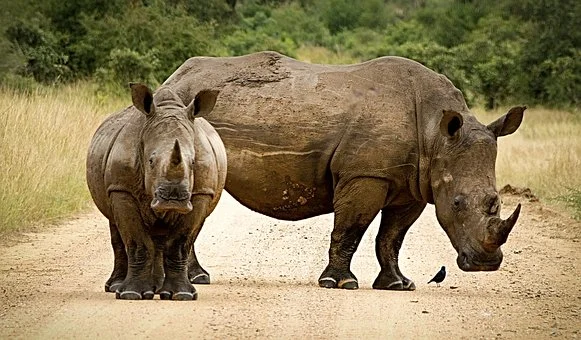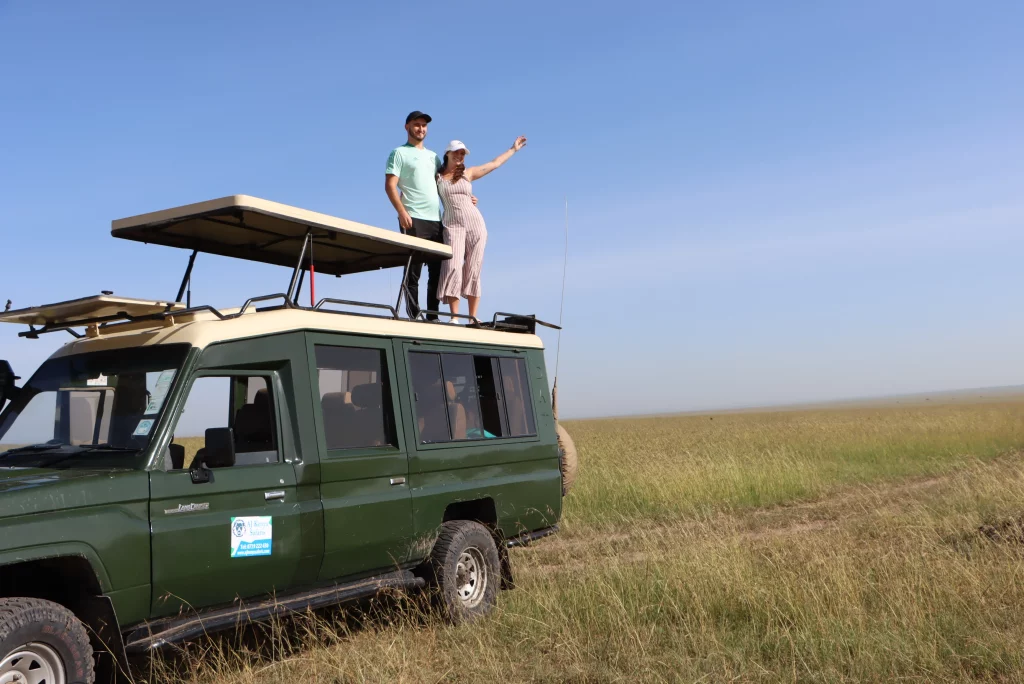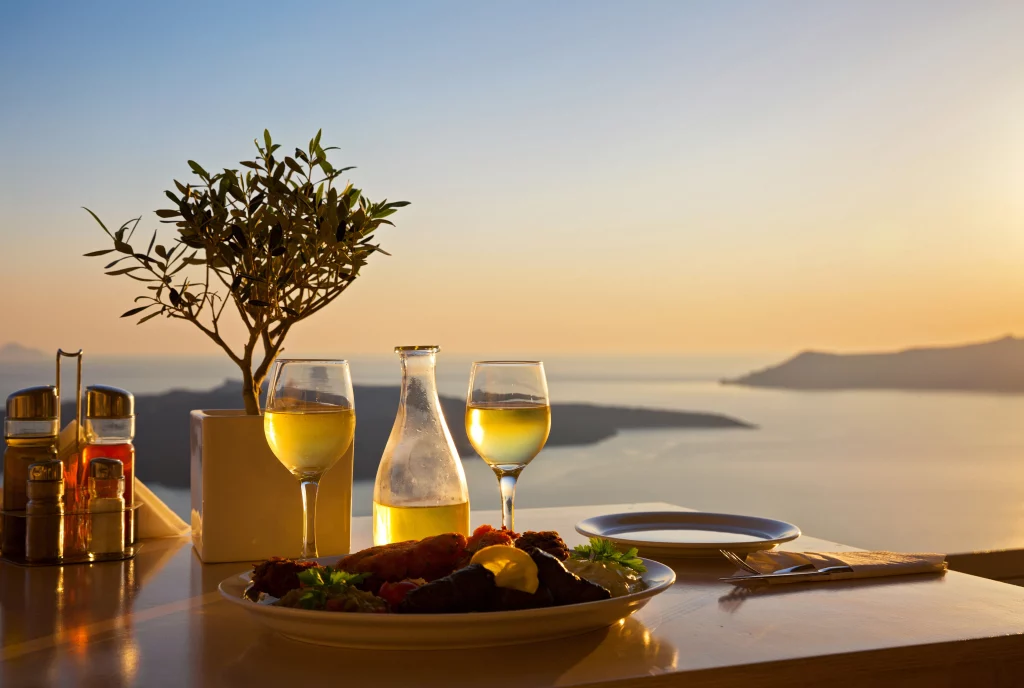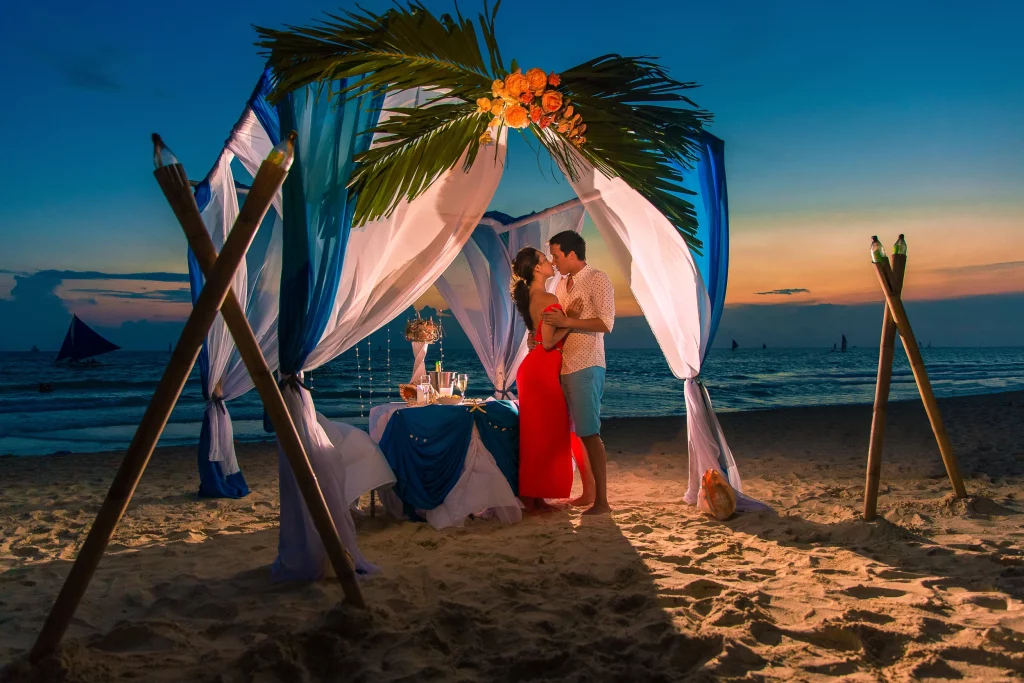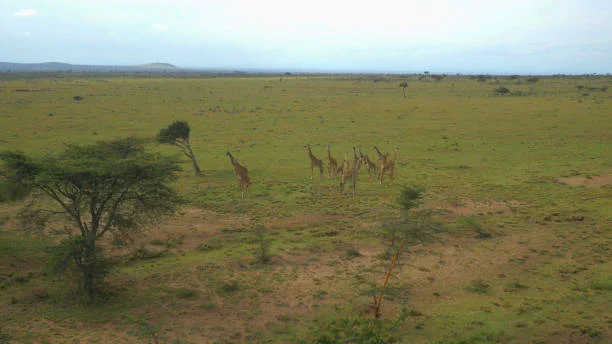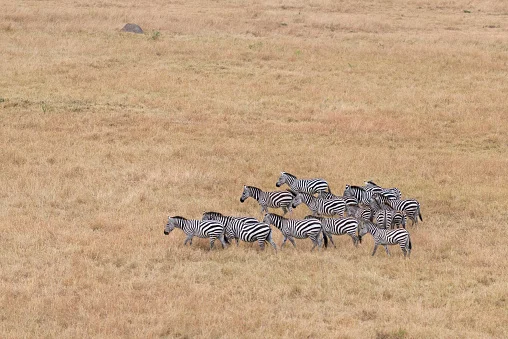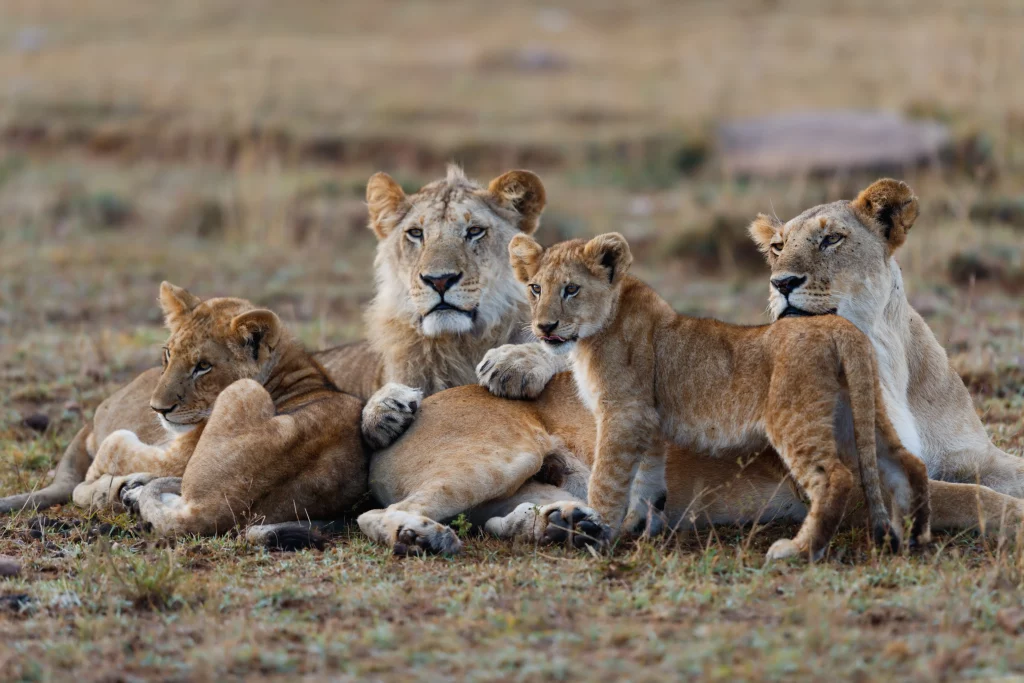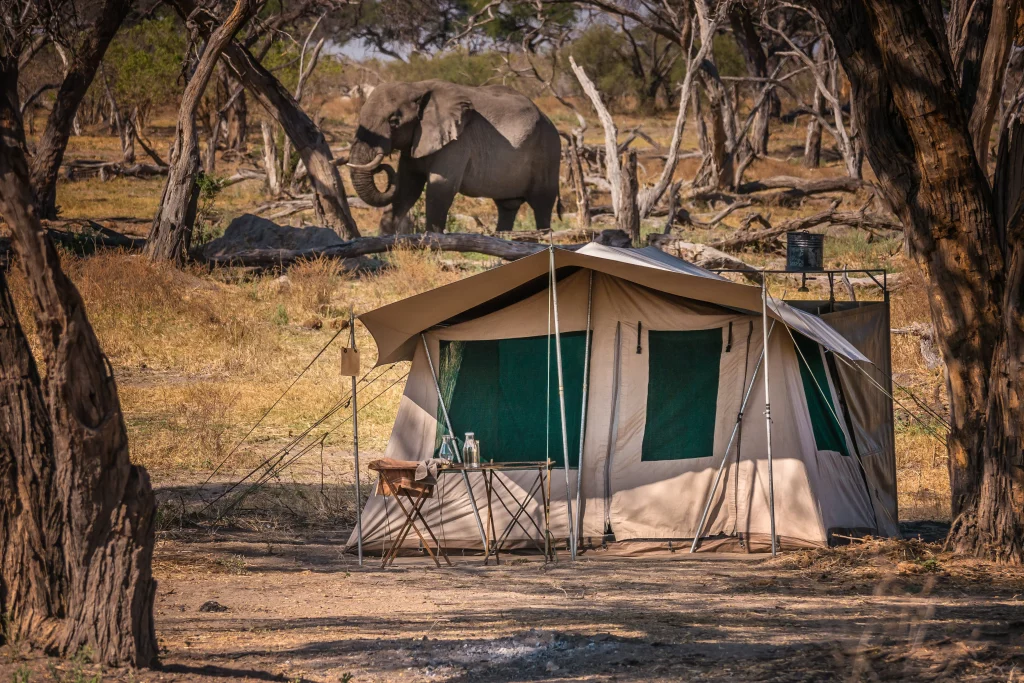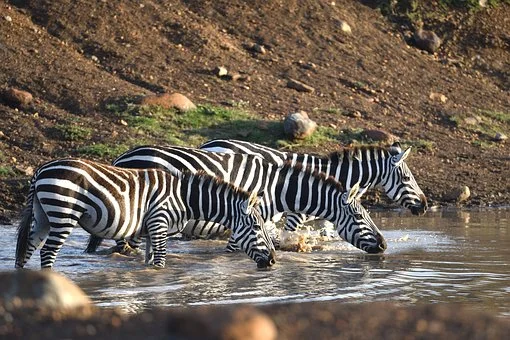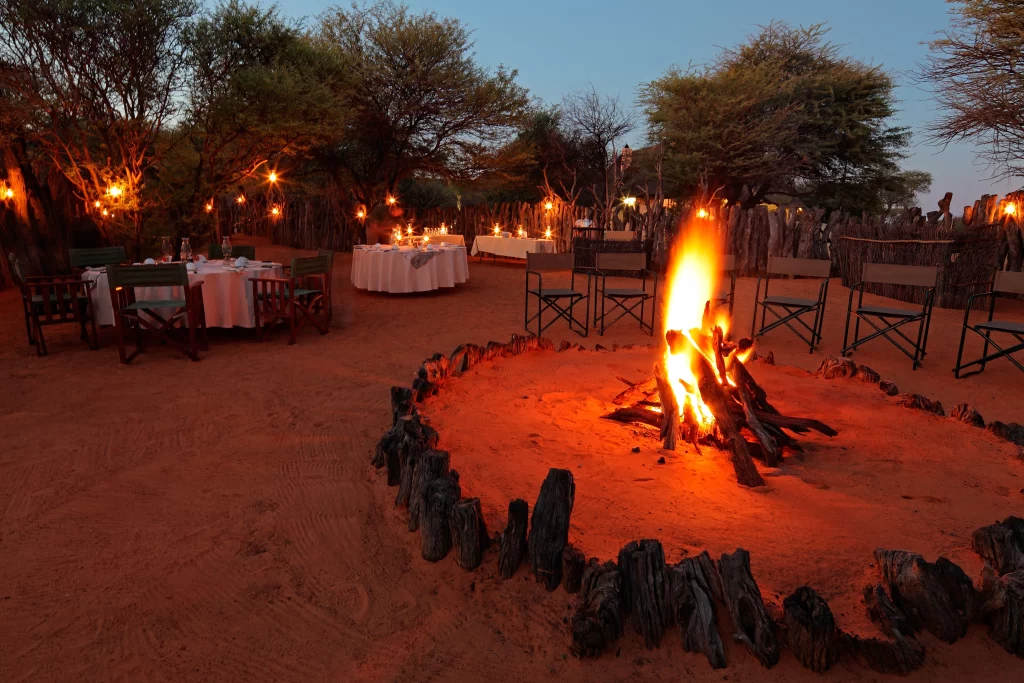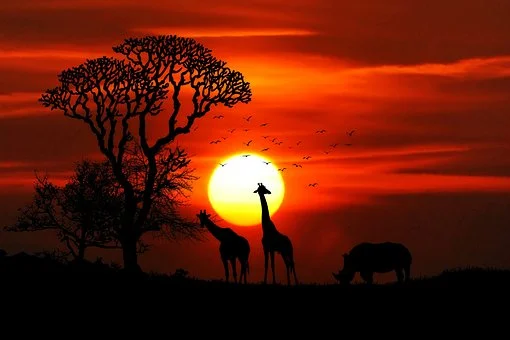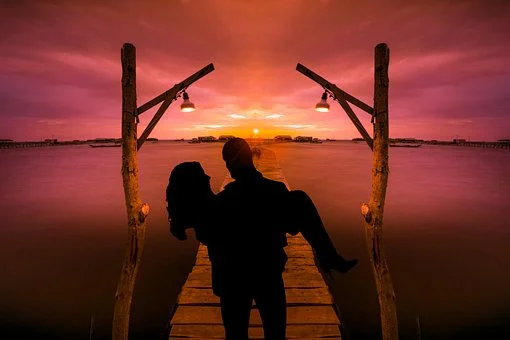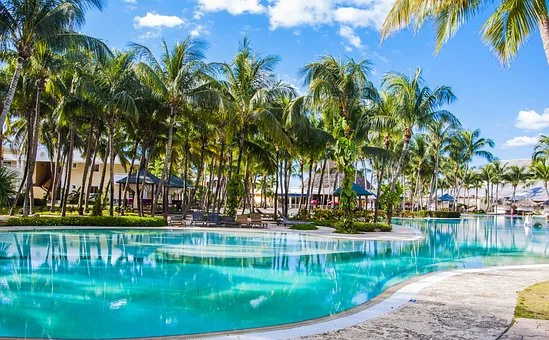The Best Time To Visit Kenya For Safari - Low, High, Peak, & Festive Seasons

What is the best time to visit Kenya? The best time for safari in Kenya is during the great migration season that occurs between July and October. The great migration involves the movement of over 1.2 million wildebeest from Serengeti National Park to Kenya’s Masai Mara National Park.
The arrival of the migratory herds corresponds with the best weather along the Kenya coastal strip. Starting July to Early December, it is possible to have a spectacular Kenya safari and beach holiday Combo.
Other than that, Kenya is an year round safari destination with good game viewing all year long. Note that June to October is the high tourism season in Kenya. Visting Kenya at this time requires advance planning – minimum 3 months advance booking.
Contact Us to Start Planning Your Kenya Safari
You can Contact Us via phone or WhatsApp at +254-704-532-105 to find out more about visiting Kenya or to start planning your Kenya safari holiday.
You can also reach us via email at safarioffers@ajkenyasafaris.com, james@ajkenyasafaris.com or even fill out our “Book a Safari Form.”
We are the local experts of Kenya travel, and we promise to plan the perfect itinerary for you.
Our Frequently Booked Kenya Safari All-Year-Round with Pricing
| Our Top Safari Packages for 2023 | Price Per Person From | View the Itinerary |
|---|---|---|
| 3-Day Aberdare National Park Safari | From GBP 941 | Detailed Itinerary |
| 3-Day Jambo Masai Mara Safari | From GBP 887 | Detailed Itinerary |
| 3-Day Masai Mara Safari from Nairobi | From GBP 798 | Detailed Itinerary |
| 3-Day Ol Pejeta Conservancy Safari | From GBP 864 | Detailed Itinerary |
| 3-Day Samburu National Reserve Tour | From GBP 815 | Detailed Itinerary |
| 4-Day Basecamp Masai Mara Safari | From GBP 1233 | Detailed Itinerary |
| 4-Day Masai Mara Safari | From GBP 1022 | Detailed Itinerary |
| 5-Day Masai Mara Honeymoon Experience | From GBP 1248 | Detailed Itinerary |
| 7-Day Kenya Wildlife Safari | From GBP 1945 | Detailed Itinerary |
| 8-Day Honeymoon Experience in Kenya | From GBP 1948 | Detailed Itinerary |
| 8-Day Kenya Wildlife Safari | From GBP 2078 | Detailed Itinerary |
| 9-Day Helicopter & Wildlife Tour in Kenya | From GBP 7685 | Detailed Itinerary |
| 10-Day Family Safari in Kenya | From GBP 2495 Per Adult From GBP 1310 Per Child | Detailed Itinerary |
| 13-Day Kenya Wildlife & Beach Safari | From GBP 4183 Per Adult From GBP 1997 Per Child | Detailed Itinerary |
| 14-Day Kenya Honeymoon Safari | From GBP 6317 | Detailed Itinerary |
The long rain season normally occur between April and early July. In most cases, it rains at night with short showers in the morning. Most of the day present clear skies and sunshine making it possible to still enjoy game drives. Those visiting Kenya at this time enjoy highly discounted prices.
The short rainy season is normally witnessed between October and December. The short rains extend across all of East Africa, mostly at night and late afternoons. Guests visiting Kenya at this time still get clear skies most of the day and excellent game viewing.

The rest of the months are dry and sunny. The dry months are ideal for game viewing, climb Mount Kenya or to go for a Masai Mara Safari. Visiting Kenya during the dry season allow full day game drive with no interruptions from rains.
Overall, the Kenyan climate is favorable enough to accommodate year round safari and beach holiday enthusiasts. The moderate to equatorial temperatures allow you to enjoy daytime activities and still participate in evening merry making. But the question remains: what is the best time to visit Kenya?
The best way to answer this is with another question: what do you want to do or experience in Kenya? Ideally, the best time to go to Kenya depends on whether you’re interested in going on a safari, climbing the mountains, or experiencing Kenya beaches. In the next phase, we will give a month-by-month guide on what you can expect if you travel to Kenya on different months.
Best Time of the Year to Visit Kenya - Month-by-Month Guide of Visiting Kenya
This page contains a month-to-month guide, handy hints, and expert recommendations on the best time to travel to Kenya.
Best Time to Visit Kenya: January - Festive to High Season
January often falls in the dry season on the broader sense of the term, lying just outside the two notables short rain and long rains seasons.
This can be considered the best time to go on a safari in Kenya since there is less rain and the landscapes are stunning. You can expect hot temperatures in Nairobi and central highlands, although you may also experience moderate showers from time to time.
The coastal region is scorching by the day and rather hot at night. There’s almost no rain at all in January at the coast.
Parks and reserves may be relatively quiet during this month, bar the New Year’s. In January, animals gather around the watering holes giving visitors front row seat of Kenya wildlife. Visitor numbers are normally in January seeing it comes right after the Christmas travel season. You should expect availability and reasonable prices at camps and lodges throughout the country.
If you want to visit Masai Mara, expect Mara Rivers and plains to be full of wildlife – from big cats to crocodiles. This month also offers you a chance of warm evenings characterized by breathtaking sundowners. If your goal is to visit Masai Mara National Reserve for photography or big 5 safaris, visiting Kenya on January is a perfect plan.
However, it would help if you also remembered that evening could get a bit cold at Masai Mara, Lewa, and Laikipia; make sure to pack layers when on safari.
January may be the best time for visiting Kenya, especially the coastal region. The weather in Mombasa and the surrounding towns offer the best time for diving and snorkeling.
Best Time for Safari in Kenya: February - Peak Season
February is one of the driest months in Kenya, averaging about three days of rain throughout the month. The absence of wet soil and mud makes the savannahs easy to access, making it the best time of year to go on safari in Kenya.
Destinations such as Masai Mara and Samburu National Reserve teem with giraffes, zebras, big cats, migratory bird species, and elephants at this time. Cities like Nairobi and Mombasa are warm and pleasant.
Tourists visiting Kenya at this time enjoy best wildlife viewing, warm weather in the coastal regions, and pay lower prices than those travelling to Kenya during the high season (June to October). The only difference between February and the dry seasons between July and october is that you don’t get to see the migratory herds.
Tourists visiting Kenya on February can expect the park to be full of predatory action, with numerous young herbivores present following last year Great Wildebeest Migration in the Masai Mara. Laikipia will also be a perfect destination for safari enthusiasts, where Elephants roam all over.
Those looking for the Kenyan coast tour will relish the clarity of the waters, providing the perfect opportunities for scuba diving, snorkeling, fishing, and other aqua activities. Sandy beaches such as Diani Beach will provide low chances of rain; hence great opportunities for relaxing and unwinding on the coast.
February is also a fantastic time to summit Mount Kenya, visit Amboseli National Park, or hike in Hell’s Gate National Park. Other great National Parks to visit on February include Tsavo National Park and Meru National Park.
Although February is more famous for tourists than January, the camp’s value remains as high as January’s. This is also the best time for anyone looking to enjoy Heli Safari in Kenya since the weather is clear. On January and February, game viewing action continues uninterrupted from Morning to evening. Consider travelling to Kenya at this time if you want a good game viewing experience with less crowd. The dry season provides a lovely time to beach goers as well.
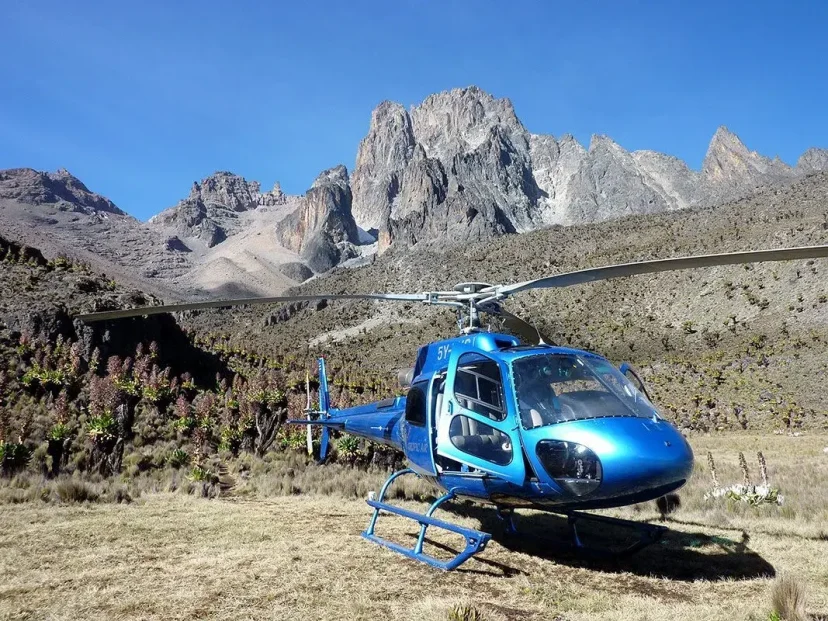
Best Time to Go to Kenya: March - End of Dry seasons
March in Kenya marks the end of the long dry season and the start of the long rainy season in Kenya as well as the neighboring East Africa countries. In Kenya, March starts pretty humidly, with high temperatures and good visibility of wildlife in all parks.
However, everything starts to change when the green season rains begin to sweep in.
The great migration remains absent for this month, but the wildlife viewing experience remains top-notch across numerous parks in the country, especially in the early days of the month.
Animals in many parks will spread as the rain starts in the latter stages of the month, and vegetation will become lusher. Game viewing action continues well in the early part of March all the way to the last week of March. By then, the grass will have grown tall.
Photography enthusiasts may want to pay particular attention to the rains, as bushes become greener and flower more effervescent. Clear waters on the Kenyan coast will continue to provide perfect conditions for water activities such as diving and snorkeling before the rains start in the last week of March.
After that, heavy rains and high temperatures may make the coastline and beaches less ideal.
Cultural enthusiasts and artists looking for the best time of year to visit Kenya should also consider March. The East African Art Festival usually takes place in Nairobi every March, providing an excellent schedule of literature, fashion, music, art, and theatre activities to enjoy.
The possibility of heavy rains at the end of the month makes March the end of the high season. This means lodges and camps across all national parks will offer better pricing in April, and availability may be higher than preceding months.
It is also worth noting that some safari lodges and camps close for the upcoming heavy rains. Only opening again in July in anticipation of the world’s greatest wildlife spectacle; the great wildebeest migration.
Best Time to Go on Safari in Kenya - April - Low/ Green Season
April is the wettest month in Kenya, with long rains at the peak. Expect a lot of rain with fewer sunshine hours if you want to visit Kenya this month.
Clouds often remain in the sky, even if it is sometimes dry during the day. With long rains comes increasingly verdant vegetation, which means more places for animals to seek shelter.
This, along with muddy roads, makes it very challenging to conduct game drives in some parks in Kenya, such as Aberdare and Mt. Kenya. Elephants are less likely to frequent the waterhole during the rainy season since the rain keeps them cool and there is water everywhere.
The best way to experience wildlife in April is by visiting animal conservancies such as the Ol Pejeta Conservancy. Here you will spot endangered species such as rhinos, chimpanzees, and hippos.
The Giraffe Centre is ideal for tourists looking to see endangered giraffe species up close. This time Mombasa and the entire Kenyan coastline are very hot by the day and receive little rain.
During this month, rainfall in the region tends to arrive in showers and often comes in the afternoon or overnight.
The overall weather condition on the coast isn’t ideal for beach-going or water-based sports.
Mosquitos are ubiquitous, especially in national parks and coast, making mosquito repellents mandatory items during your April visit to Kenya.
The great thing about rains and the green season is that it keeps visitors away. This means you can secure the most attractive rates of the year in April.
Most hotel accommodations and lodges will offer special low-season rates, and the airlines will also lower their prices considerably. Consider travelling to Kenya in April if budget is a huge limitation for you.
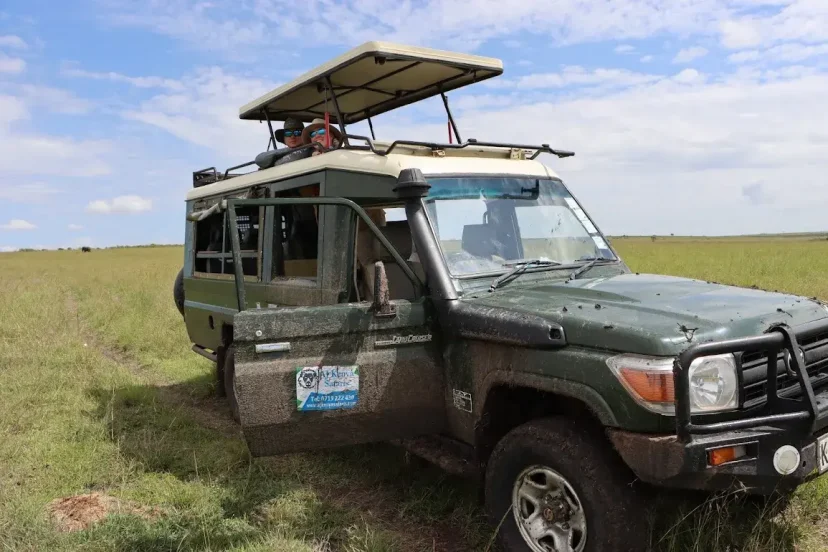
Best Time to Travel to Kenya - May - Low Season
May is also one of the wettest months in Kenya. You should expect a lot of rain throughout the month, along with relatively high temperatures and cooler evenings in most parts of the country.
Muddy tracks, dispersed wildlife, and thick vegetation will challenge game drives and wildlife sightings. However, this may appeal to safari-goers in the hunt for a challenge.
Those interested in wildlife exhibitions may still enjoy visiting conservancies dispersed across the country. On the Kenyan coast, water clarity will continue to decrease compared to earlier months in the year.
This will be bad news if you seek scuba diving, snorkelling, and other water activities in the coastal region. We suggest seeking accommodation in lodges and hotels with swimming pools, for maximum relaxation and unwinding by the pool.
You should expect accommodation prices to be at their lowest as May is still in the low season. However, some lodges and safari camps may remain closed during the wet season. Remember, waterproofs and mosquito repellents are essential for all activities during this time.
Best Time for great wildebeest migration - June - Low to Peak Season
June ushers the beginning of drier weather in Kenya after the long rains of April and May and the busy high season.
The early days of the month continue to be wet, but as you move towards the middle and the end, the month starts to get drier and sunnier. The western interior and the Rift Valley are sweltering by day, fantastic evening and night, and occasional rainfall.
Some of the rains are brought by the Kusi (Swahili for southern wind) Moonsoon winds in the early days of the month. Moonsoon rain season is still warm in the Kenyan coast.
Some grasses in Kenyan plains and parks will remain tall, making it difficult to spot some animals. However, some parks, such as the Masai Mara, will remain beautiful and scenic for photography.
Animals will start to congregate around shrinking water sources, which will increase your chances of wildlife viewings.
This is an excellent time to visit or start thinking about a trip to the Masai Mara to see the wildlife as the wildebeest migration. At this time, the wildebeest will have started gathering along the Kenya Tanzania boarder, ready to cross the Mara River.
We also recommend visiting the Meru National Park at this time. The park’s waterways will be in full flow following the long rains. This makes it an idyllic destination for spotting distinctive bird species such as the African pygmy kingfisher and African fish eagle.
The first rainy season will also leave the Amboseli National Park full of greenery. Although the area will be increasingly hot, the drying period will attract giant elephants to rivers and watering holes.
Mombasa and the coast region will remain hot by day and relatively calm by night. The area also receives a fair amount of rainfall.
Water activities such as diving and snorkelling may be conducted in areas like Diani Beach. The availability of lodges and camps will start becoming harder to come by as we approach the high season.
But since the Great Migration won’t be happening till the start of July, June becomes the perfect month to snap up an ideal accommodation. It is worth noting that some hotels still treat June like the low season while others hike their prices from 15th June.
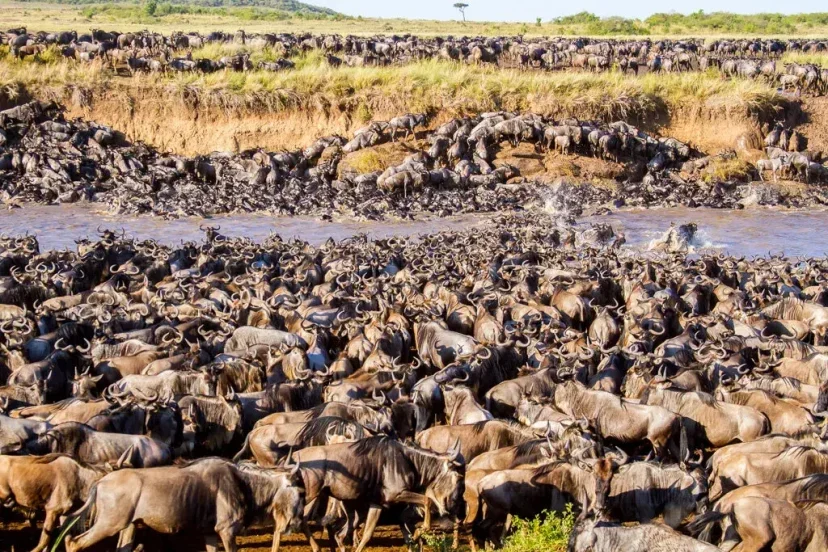
Best Time to Visit Kenya for Safari - July - Peak/Migration Season
The wet season will be gone by the start of July, ushering in the dry season, and the peak season will be in full swing.
Scarcity in water sources and thinning of lush greenery will make animal sightings considerably easier.
July is a fantastic time to catch a glimpse of roaming wildlife in savannahs and national parks.
This month is also widely regarded as the best time to go on safari in Kenya because it coincides with the Great Wildebeest Migration.
The first herds of wildebeests, gazelles, and zebras will start arriving in the Masai Mara during this time, pursued by fearsome crocodiles in the Mara river and by big cats on land.
The massive Masai Mara river crossing will not start until the mid of July, although there’s some degree of wildlife crossing by the end of June. We recommend visiting some smaller parks and conservancies such as the Tsavo East if you want to avoid the crowd. Amboseli National park is also a good destination to visit at this time.
Expect properties to charge the highest of prices during the great migration season. Availability of accommodation will also be a hustle. We, therefore, recommend booking two to three months in advance to get the best rates and picture-perfect accommodation options.
In addition to wildebeest migration, July coincides with the arrival of migratory bird species in Masai Mara. Game viewing is perfect at this time of the year and the Masai Mara Savannahs are mostly still beautifully green from the just ended long rain across East Africa.
Best Time to Visit Kenya - August - Peak/Migration Season
August is one of the coolest months of the year in the country, with temperatures hitting as low as 10° C at night time.
The days are generally sunny and hot, particularly in regions with higher altitudes.
The low humidity and little to no rainfall in the coastal region make August one of the best months to sunbathe and conduct water activities.
That means you can try out scuba diving, surfing, swimming, kayaking, and snorkelling.
The herds will mostly have settled by mid-August on the plains of Masai Mara, although there will still be activities in terms of animal crossings at the Mara River.
But it will be breathtaking to witness the action on the plains as the wildebeests, gazelles, and zebras demonstrate survival for the fittest trick.
They will be against the predators such as cheetahs, leopards, and lions, and the life cycle will be in full motion.
Expect accommodation rates to be at a premium price and next to no availability, especially for luxurious accommodations.
As such, we also recommend booking early in advance to secure sublime options.
Best Time of Year for Kenya Safari - September - Peak/Migration Season
September is undoubtedly on the list of the best time for a Kenya safari. It is still hot and sunny like August, but the crowds will slowly reduce.
The last of the wildebeests will still be wandering around the plains of the Mara, so you’ll still catch a glimpse of the Great Migration.
The sheer number of herbivores in the plains will still make for thrilling encounters between prey and predators.
You can relish the sighting at other tourist attractions such as Lake Naivasha, Lake Nakuru, Ol Pejeta, etc.
Here, you will get a chance of memorable wildlife viewing, including hippos, impalas, giraffes, and zebras, to name a few species.
You’ll have a good time seeing massive flocks of flamingoes as well as other migratory birds in destinations such as Lake Bogoria and Nakuru.
Clear conditions throughout the country provide textbook backdrops for wildlife and nature photography.
The great weather with less rainfall will allow for some exciting water activities along the coast.
Ivory sand in the area will feel very soft on toes, and the water will be warm and sparkly. Unfortunately, the fall-off in crowds at tourist attractions won’t mimic prices.
High season rates will remain throughout September and the first half of October.

Kenya Safari Best Time to Go - October - Peak to High Season
The peak season will continue in some places while others will start the month with the high one.
This will still be an excellent time to visit the country, although you might want to come earlier in the month for the best tourist condition in areas such as Masai Mara.
The Great Migration will depart from Masai Mara, but massive herds can still be seen in the park, especially in the southeastern parts.
Wildlife devotees and photographers, in particular, should take advantage of excellent wildlife sightings in parks and conservancies.
The highest concentration is usually around rivers and watering holes.
Enormous numbers of migratory birds will be flying from Europe around October to areas such as the western parts of Lake Nakuru and Amboseli National Park.
Attractions such as Mount Kenya National Park and Hell’s Gate National Park will also make good destinations during this period.
The days are hot, nights cool, and might receive occasional rainfall in Nairobi and central highlands.
Mombasa and its surrounding will remain hot by the day, rather hot by nighttime, and may receive moderate rainfall.
This means that water activities can still take place. October is ideal for budget-conscious travellers.
Prices will also fall dramatically as accommodation availability increases, especially in lodges and camps near Masai Mara.
This will give safari-goers seeking private exploration a perfect chance to navigate the park.
Best Time of Year to Go on Safari in Kenya - November - High Season
The weather in November can be described as wet, with common tropical showers.
This means that the temperature is high enough to wear light clothes, but waterproof options can save you from getting caught in unexpected showers.
The country’s rift valley and western interior parts become hot by day, cool at night, and may receive moderate showers.
In November, animals cluster around the few remaining water sources in most parks and game reserves, which means perfect opportunities for wildlife sightings.
You can still enjoy the Big Five, baby animals and migratory birds abound the Masai Mara, although the Great Migration is over by Now.
You can move to the Kenyan coastline to enjoy the beaches and water sports if you seek wildlife viewing and safari alternatives.
The coastal region is scorching by the day, rather hot by night, and may receive moderate rainfall in November.
The oncoming short rains bring mosquitoes, and we recommend packing some repellents, regardless of the place you intend to visit.
Hotel’s prices and travellers are markedly lower compared to former months and the ensuing month of December. November is referred to as a ‘shoulder month,’
Despite this, we still recommend booking well in advance if you want to combine November with the incoming Christmas Holidays.
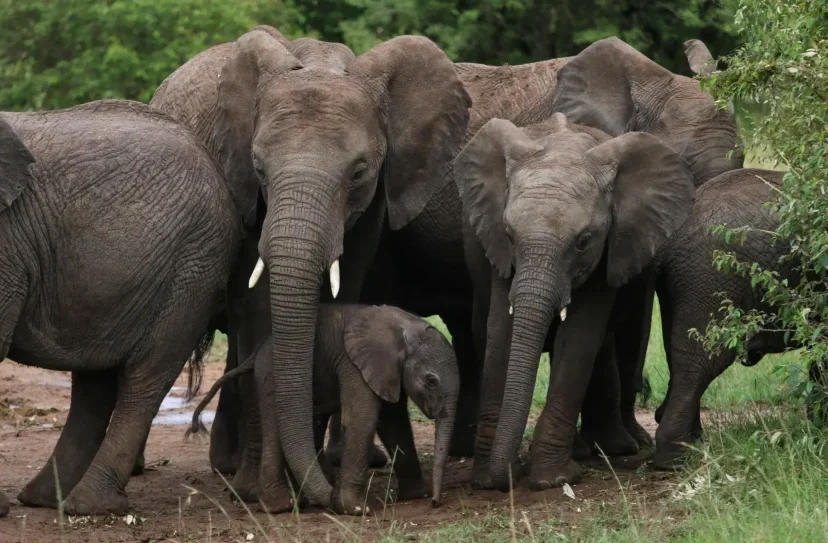
Best Time to Visit Kenya - December - High to Festive Season
The end of the year starts with a high season, and then the festive season kicks in from 20th December to the 3rd of January.
Christmas holidays attract huge crowds at major attraction sites and destinations, such as national museums, national parks, historical sites, beaches, and major towns.
New Year’s and New Year’s Eve also attract many domestic and international tourists who look to end the year and start a new one in style.
The temperatures across the country are ideal if you are looking to celebrate the festival in various parts of the country, especially if you want to head to Mombasa or similar towns.
The constant warm temperatures and ocean breeze provide a perfect blend for beach vacations in December, although the coastal region’s humidity is high.
Due to the short rains, Kenyan plains and savannas will be flush with greenery.
Water sources begin to dry up in the later stages of the month, making wildlife sightings easier.
A visit to the Masai Mara and similar game reserves is ideal for merry-making during Christmas and New Year’s celebrations.
This is also a stunning month for photography, where migratory birds and other animals can easily photograph amidst the thriving foliage.
Since this is a high season, accommodation availability may be tricky. Prices also tend to rise with a decrease in accommodation options.
As such, we recommend booking two to three months early if you are looking to go on a late or early December holiday.

